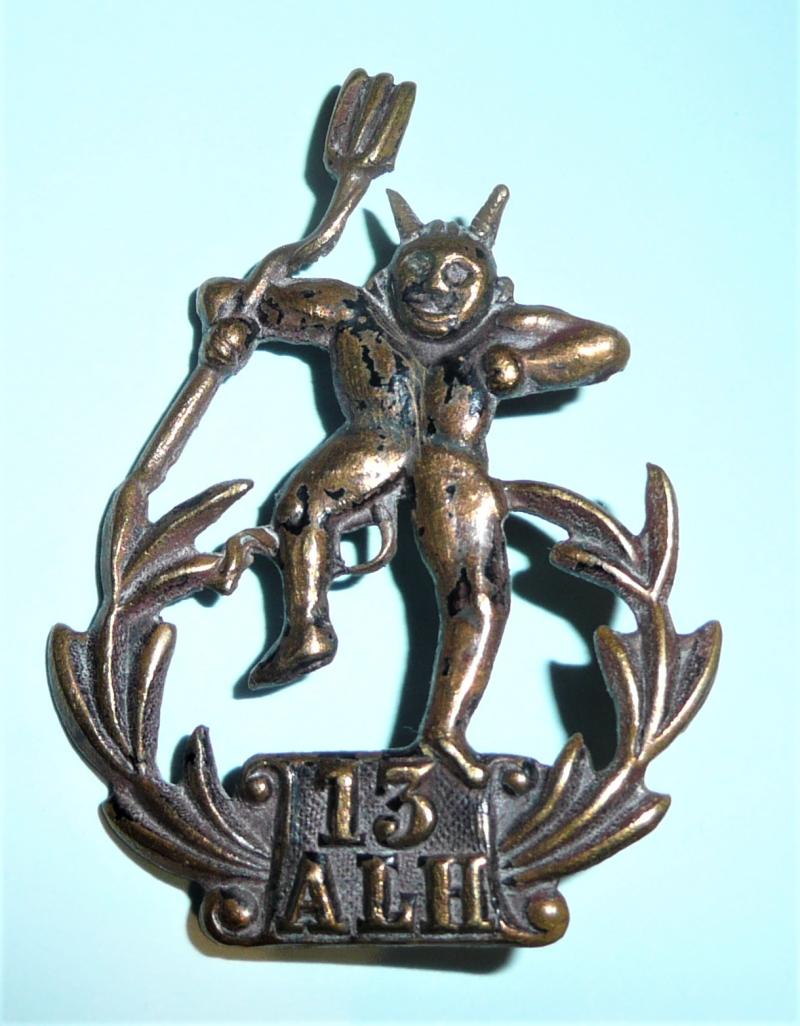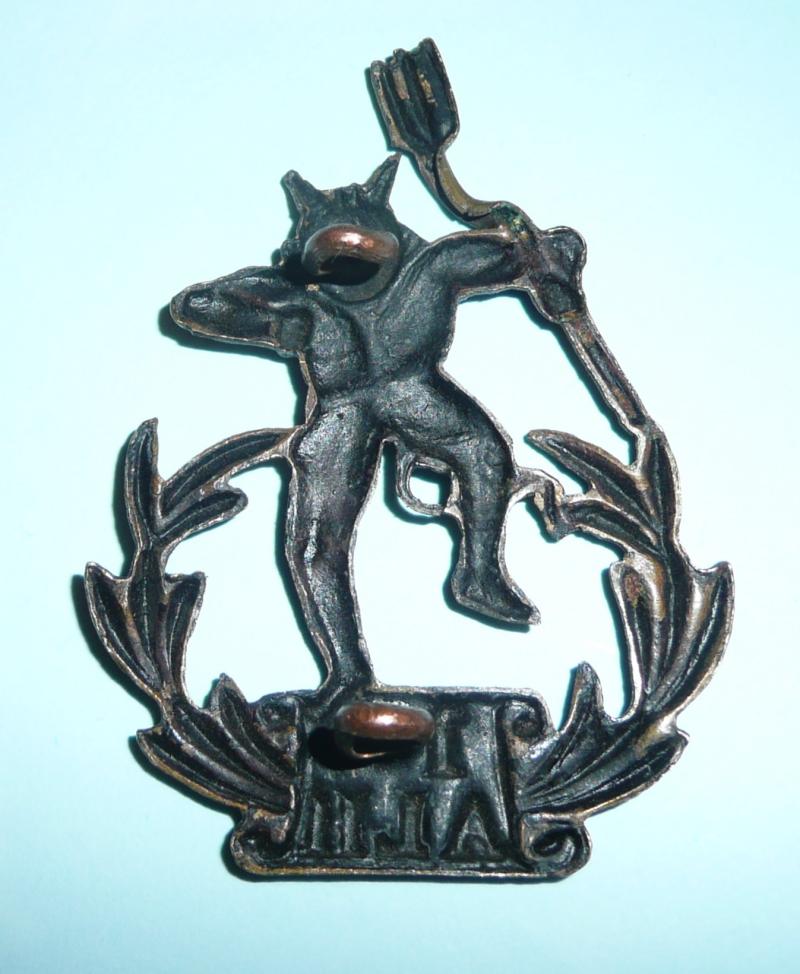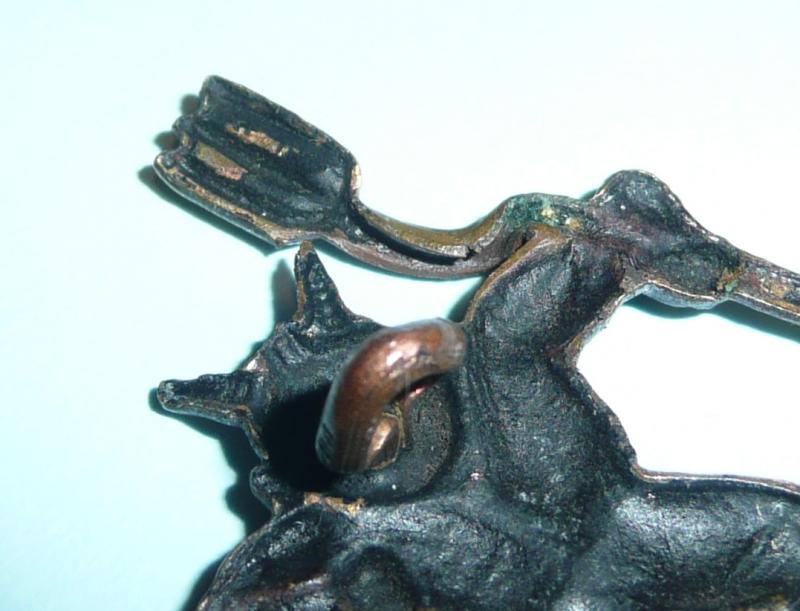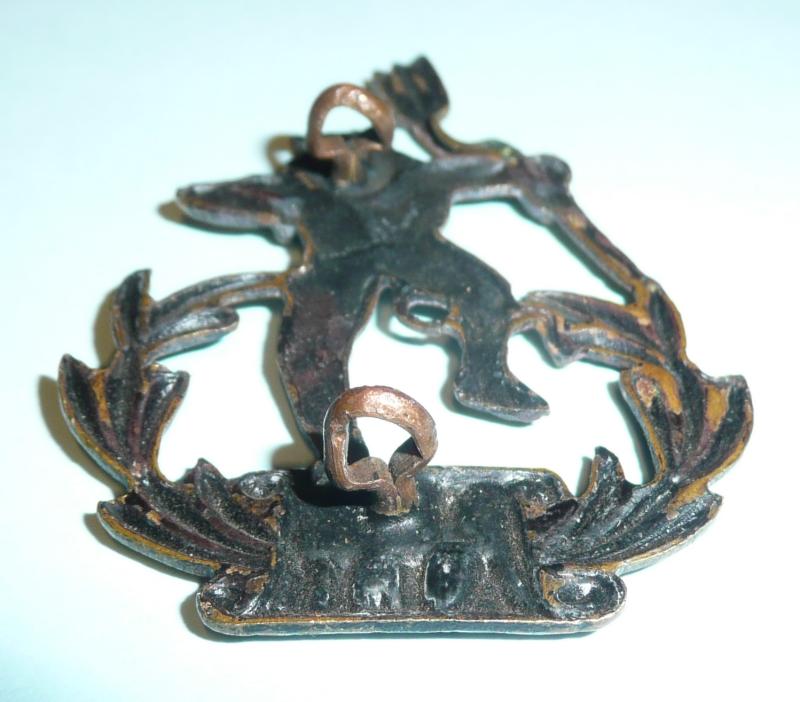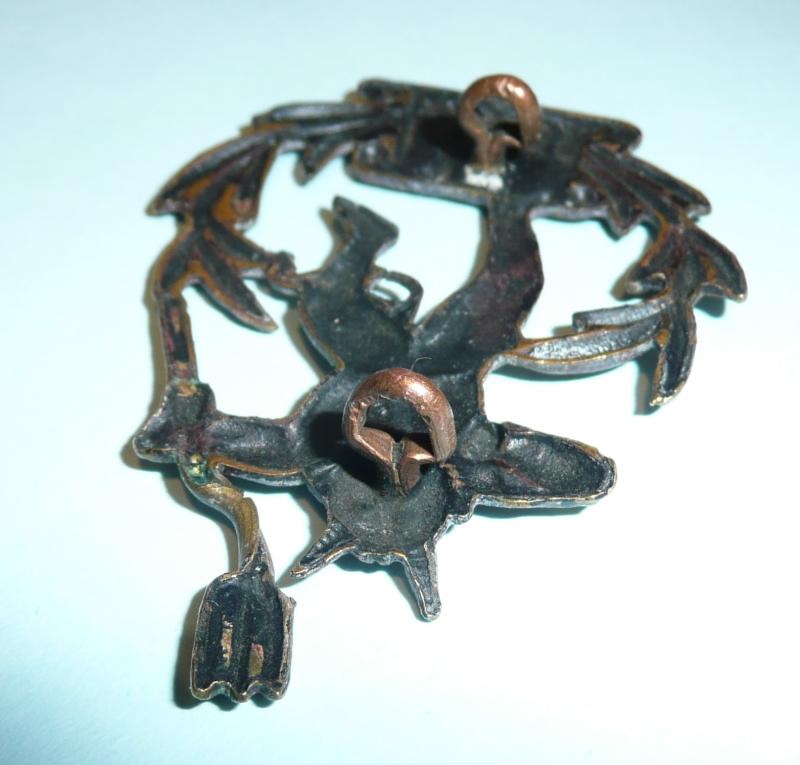WW1 13 ALH 13th Australian Light Horse 'Dancing Devils' Blackened Copper Cap Badge
A die struck blackened copper slouch hat badge of the 13th Australian Light Horse. Known as the "Dancing Devil" hat badge, with two original lugs (north - south), which show some wear, and much wear to black finish to front. Please note the trident spear is misshaped and bent round / squashed out of line, other than this is a good original striking of this much copied badge. The die struck ones were allegedly made by Tiptaft in the UK. Circa 5.5cms tall (perhaps slightly taller had the trident spear been straight).
As an unofficial badge it was paid for out of regimental funds. Cast versions made in Egypt also exist. There were also smaller unofficial collar badges.
From the Australian War Memorial website:
"The 13th Light Horse Regiment was formed at Broadmeadows in Victoria in March 1915; it was the third light horse regiment to have been raised in that state. Its regimental number quickly led to it becoming known as the “Devil’s Own” regiment. It left Australia on 28 May and disembarked in Egypt on 29 June 1915.
The light horse were considered unsuitable for the initial operations at Gallipoli, but were subsequently deployed without their horses. The 13th Light Horse landed on 11 September 1915. For most of its time at Gallipoli the regiment manned the trenches at Lone Pine, one of the most heavily contested parts of the ANZAC front line. The regiment left Gallipoli on 20 December 1915.
Back in Egypt, the infantry component of the AIF was expanded from two divisions to four and the 13th Light Horse was broken down to provide a divisional cavalry squadron for the 2nd, 4th and 5th Divisions. These squadrons proceeded to France with their divisions in March and June 1916, and were eventually reunited in July when the 13th Light Horse was reformed as the cavalry regiment for I ANZAC.
On the Western Front, terrain and the nature of the war there limited the roles mounted troops could fulfil, but they were still heavily employed. The 13th Light Horse carried out traffic control, rear area security and prisoner escort tasks, and, when the tactical situation permitted, the more traditional cavalry role of reconnaissance. It was most active during the more mobile phases of the war on the Western Front, which included the follow-up of the German retreat to the Hindenburg Line in early 1917, the stemming of the German Spring Offensive of 1918, and the allied offensive of August and September 1918. The regiment’s largest engagement was during the operations to capture the Hindenburg “outpost line” between 5 and 9 September 1918 when it provided the advance guard, along a front of 13.5 kilometres, for the advance of the Australian Corps. The regiment had become the Australian Corps cavalry regiment upon its formation in November 1917.
Like much of the Australian Corps, the 13th Light Horse was completing a period of rest and retraining when the war ended on 11 November 1918. After the armistice its personnel were progressively returned to Australia for discharge. The regiment was disbanded on 30 April 1919. "
Comm DaMc (38)
Code: 65471

